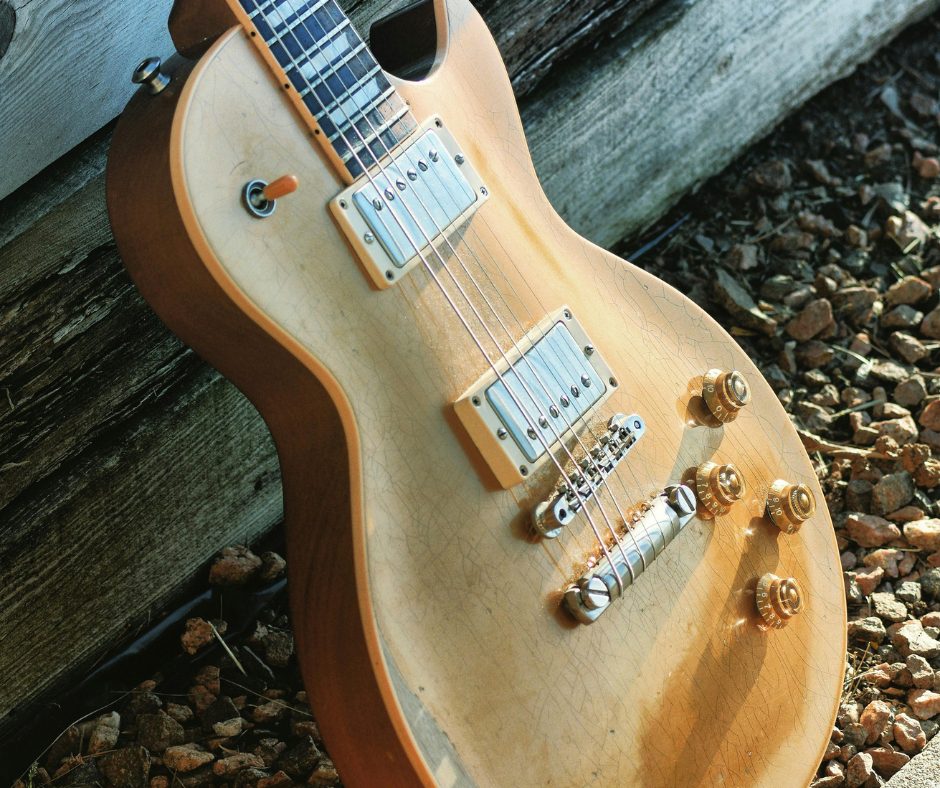The 1950s are often referred to as the golden era of Gibson Les Paul guitars, marking the birth of a legacy that has shaped music history. The decade saw the Les Paul evolve from a relatively modest instrument to an iconic symbol of tone, craftsmanship, and aesthetic beauty. Each iteration throughout the decade introduced new features and refinements that influenced the way Les Pauls are designed and played today.
Let’s dive into the key differences between 1950s Les Paul models, focusing on their specifications, design changes, and unique tonal characteristics.
1952: The Birth of the Les Paul
The 1952 Les Paul Model was the first-ever Gibson Les Paul, co-designed by guitarist and innovator Les Paul himself.
Key Features:
• Finish: Goldtop finish, giving the guitar its now-iconic look.
• Body: Mahogany with a maple cap, offering warm resonance with added brightness.
• Pickups: Dual P-90 single-coil pickups for rich, midrange-focused tones.
• Bridge: Trapeze tailpiece, which made stringing cumbersome and created tuning stability issues.
• Neck: Chunky, rounded neck profile that defined the “baseball bat” feel of early Les Pauls.
Tonal Characteristics:
The 1952 Les Paul delivered warm, fat tones ideal for jazz and early rock ‘n’ roll. However, the trapeze tailpiece often received criticism from players due to its impracticality for string bending and setup.
1953–1954: Refining the Formula
In 1953, Gibson addressed player feedback by introducing the wraparound bridge in place of the trapeze tailpiece. The design changes made the guitar more playable and improved sustain.
Key Features:
• Bridge: The new wraparound bridge simplified stringing and offered better tuning stability and intonation.
• Pickups: Continued use of dual P-90s.
• Neck Profile: Retained the chunky feel but with slight refinements for comfort.
By 1954, Gibson introduced the Les Paul Custom, nicknamed the “Black Beauty,” which offered premium appointments such as:
• Ebony Fingerboard: Instead of rosewood, for a brighter, snappier response.
• New Pickup Combination: A P-90 in the bridge and the introduction of the Alnico V staple pickup in the neck.
Tonal Characteristics:
The 1954 Les Paul Custom was darker and richer in tone compared to the Goldtop, making it a favorite among jazz and blues players.
1955: The Advent of the Tune-O-Matic Bridge
In 1955, Gibson revolutionized the Les Paul design by introducing the Tune-O-Matic bridge (ABR-1). This bridge, paired with a stopbar tailpiece, became a hallmark of Les Paul guitars.
Key Features:
• Bridge: The Tune-O-Matic allowed for precise intonation adjustments, significantly improving playability.
• Pickups: Continued use of P-90s for the Goldtop and P-90/Alnico V for the Custom.
Tonal Characteristics:
The 1955 models featured improved sustain and tuning stability, with a more consistent tonal response thanks to the enhanced bridge system.
1957: The Birth of Humbuckers
The 1957 Les Paul Standard was a game-changer with the introduction of Seth Lover’s PAF humbuckers (Patent Applied For). These pickups reduced hum and delivered a fuller, more powerful tone, redefining the Les Paul sound.
Key Features:
• Pickups: Dual PAF humbuckers with a warm, articulate tone.
• Finish: Goldtop for the Standard; the Custom retained its black finish.
• Neck Profile: Slightly slimmer than early ’50s models, offering improved playability for lead players.
Tonal Characteristics:
The PAF humbuckers provided more output, harmonic richness, and versatility compared to P-90s, making the 1957 Les Paul Standard the precursor to the “modern” Les Paul.
1958: The Burst Begins
In 1958, Gibson introduced the first sunburst Les Paul, marking the beginning of the Les Paul Standard “Burst” era. The translucent finish showcased the natural beauty of the maple tops.
Key Features:
• Finish: Sunburst finish (cherry to amber fade), now known as “Heritage Cherry Sunburst.”
• Pickups: PAF humbuckers.
• Body: Retained the mahogany/maple combination.
• Neck Profile: A thick, rounded neck similar to earlier ’50s models.
Tonal Characteristics:
The 1958 Les Paul Standard delivered rich, dynamic tones with unparalleled sustain, making it a favorite among blues and rock players.
1959: The Holy Grail
The 1959 Les Paul Standard is widely regarded as the pinnacle of Gibson’s craftsmanship and tone. With fewer than 650 made, it has become one of the most sought-after guitars in history.
Key Features:
• Neck Profile: Slimmer “C” shape compared to 1958 models, offering improved speed and comfort.
• Top: More pronounced flame maple tops, giving the guitars stunning visual appeal.
• Pickups: PAF humbuckers retained but with slight variances in output due to hand-wound construction.
Tonal Characteristics:
The 1959 Les Paul is renowned for its balanced, clear, and powerful tone, making it ideal for everything from jazz to hard rock.
1960: The Transition
By 1960, the Les Paul began to transition into the SG shape. The 1960 Les Paul Standard retained the Burst design but featured a slimmer, flatter neck profile and subtle aesthetic changes.
Key Features:
• Neck Profile: Slim taper neck, the slimmest of the decade.
• Finish: Continued use of the sunburst finish but with darker bursts emerging later in the year (“tobacco burst”).
• Pickups: PAF humbuckers.
Tonal Characteristics:
The slimmer neck made it easier for fast-playing lead guitarists, while the tone remained largely consistent with the 1959 models.
Conclusion: An Iconic Decade
The 1950s Les Paul guitars laid the foundation for one of the most revered instruments in music history. Each year brought subtle refinements and innovations, culminating in the legendary 1959 Les Paul Standard. Whether you prefer the raw simplicity of early P-90 models, the opulence of the Custom, or the game-changing PAF-equipped Standards, the ’50s Les Pauls remain benchmarks for tone, craftsmanship, and collectibility.
Their legacy endures as a testament to Gibson’s golden era, and they continue to inspire players and collectors worldwide.







